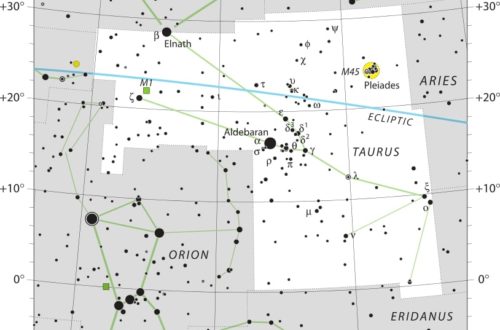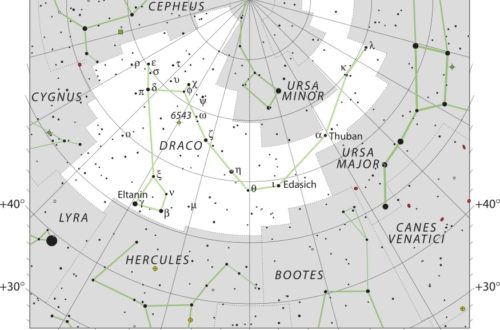Monthly Stargazing Calendar for June 2013
Looking for the June 2025 stargazing calendar?
Unlike last month, this won’t be a such an eventful month when it comes to astronomical events. Mercury will be at its greatest eastern elongation and then we will have the June solstice. We will also have the largest full moon of the year.
On June 12 Mercury will be at its greatest eastern elongation, which means that the planet will be at its furthest angle from the Sun, known as greatest elongation. Mercury will be at its highest point in the night sky after sunset. This is the best time to view Mercury since it stays so close to the Sun and doesn’t usually climb very high above the horizon.
On June 21 we will have the June solstice. It will occur at 05:04 UTC. The North Pole of the earth will be tilted toward the Sun, which will have reached its northernmost position in the sky and will be directly over the tropic of Cancer at 23.44 degrees north latitude. This event marks the first day of summer (summer solstice) in the Northern Hemisphere and the first day of winter (winter solstice) in the Southern Hemisphere.
Would you like to be notified of stargazing events?
Moon phases
As you know, the moon has a big impact on the visibility of celestial bodies in the night sky. So here are the moon’s phases for this month:

On June 23, the full moon will be the largest of this entire year because it will arrive at its closest point to the Earth at a distance of 356,991 km, making it a so-called supermoon. This will affect ocean tides by increasing their range (exceptionally low to exceptionally high) for the next few days.
Positions of the planets this month
Mercury: The closest planet to the Sun can be seen at dawn and dusk travelling across the constellation of Gemini, not far from the planet Venus. This planet, being the closest to the Sun, will appear to move quickly in the night sky and its position will change in the following weeks.
Venus: The sister planet can be seen in the constellation of Gemini along with Mercury. Just like Mercury, Venus can only be seen at dawn and dusk.
Mars: The red planet can be seen in the constellation of Taurus.
Jupiter: The gas giant is visible between the constellations of Taurus and Gemini. Jupiter can easily be spotted with the naked eye, even in highly illuminated cities.
Saturn: The ringed giant can be seen with the naked eye between the constellations of Virgo and Libra.
Uranus: The gas giant can be seen between the constellations of Pisces and Cetus with the use of a telescope.
Neptune: The blue giant requires a telescope pointed in the constellation of Aquarius in order to be seen.
Major astronomical event next month
- July 27, 28 – Delta Aquarids meteor shower.
See also:
- Previous month’s calendar: Stargazing Calendar for May 2013
- Next month’s calendar: Stargazing Calendar for July 2013
Would you like to receive similar articles by email?





